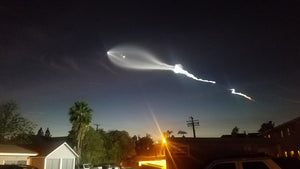Perseid Meteor Shower
Looking up this month you will be able to catch the Perseid meteor shower widely viewed as one of the best of the year. You can also continue to see the super bright Saturn and Jupiter as they begin to fade away from opposition.
The Perseid meteor shower is the dusty remnants of the comet Swift-Tuttle. First discovered in 1862, Swift-Tuttle is the largest known object to repeatedly pass by Earth, measuring at 16 miles wide! It's last Earth encounter was in 1992 and is due back in the year 2126. Until then we can enjoy the dust cloud that this comet left behind in the form of the Perseid meteor shower. The Perseids are one of the most spectacular and exciting meteor showers of the year with as many as 60-70 meteors per hour. In outburst years up to 200 meteors per hour! This year, the waning gibbous moon will create some difficulties for observers after it rises around 12:30a.m.
We recommend watching the Perseids on the night of August 11th,between the hours of 10 p.m. and 4:40 a.m., with peak viewing from 3:40 to 4:40 a.m.
The key to observing the meteor shower is darkness. The farther you can get from light pollution the better your eyes will be able to absorb light. The best way to avoid moon interference is to start early in the evening. Let your eyes adjust to darkness for 30 minutes. Dress warmly. Bring a reclining chair, or spread a thick blanket over a flat spot of ground. Lie down and look up somewhat toward the North. Meteors can appear in any part of the sky, although their trails will tend to point back toward the radiant Perseus(below). If you would like to take a time-lapse video we recommend using our Revolution Imager in combination with an All Sky wide angle lens. Enjoy!







